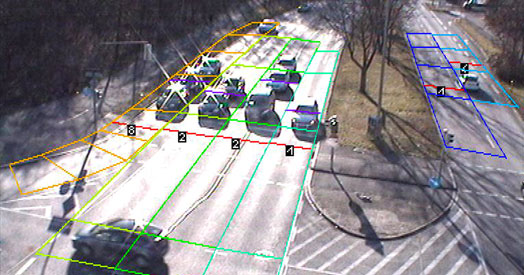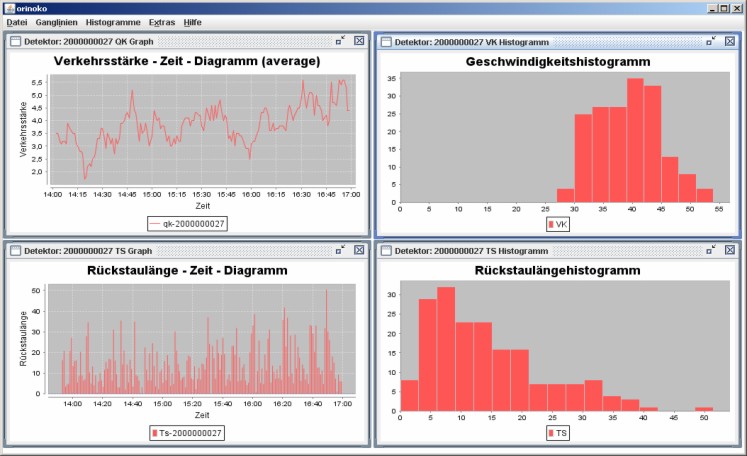Background
For the automated, adaptive control of road traffic with light signal systems and dynamic route guidance systems, up-to-date traffic data are required in suitable quantity and quality.
Conventional induction loops deliver this data, but they are often too expensive for area-covering use. On the other hand, inexpensive systems based on Floating Car Data qualify for real-time application only when a significant minimum coverage of measurement vehicles has been reached. Video sensors can close the gap between those two approaches.
In addition to this, traffic control centers require that up-to-date images of congestion hot spots are provided as a standard.
For several years, the Fraunhofer IVI has been working on the combination of live camera systems and video sensors for the acquisition of road traffic data.
The result of this research is a software which automatically detects common traffic parameters in image sequences. The resolution and processing of images is carried out in due consideration of data privacy requirements. In particular, it is not possible to identify people or license numbers on vehicles.

